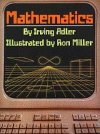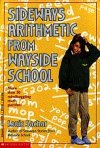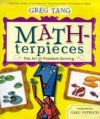Wired for Math
Share this:
- Share via email (Opens in new window) Email
- Click to share on Facebook (Opens in new window) Facebook
- Click to share on X (Opens in new window) X
- Click to share on Pinterest (Opens in new window) Pinterest
- Click to share on Reddit (Opens in new window) Reddit
- Share to Google Classroom (Opens in new window) Google Classroom
- Click to print (Opens in new window) Print
You can learn more about Elizabeth Spelke and her research on math skills at www.news.harvard.edu/gazette/2001/11.29/03-spelke.html and www.news.harvard.edu/gazette/2004/07.22/21-think.html (Harvard University).
Sohn, Emily. 2003. It’s a math world for animals. Science News for Kids (Oct. 8). Available at http://www.sciencenewsforkids.org/articles/20031008/Feature1.asp.
Books recommended by SearchIt!Science:
 |
Mathematics— Irving Adler
Published by Bantam Doubleday Dell/Random House, 1990.
Did you know that six is a perfect number? A number is called perfect if the sum of its divisors equals the number. One plus two plus three equals six, so six is a perfect number. This book uses text, illustrations, charts, and simple computer programs to explain natural, prime, and triangular numbers. Polygons and angles are also explained. |
 |
Sideways Arithmetic from Wayside School— Louis Sachar
Published by Scholastic, 1992.
How much is “he plus me?” What do you get when you subtract “pop from yoyo?” One of the students at the Wayside School, Sue, can’t figure it out. With teacher Mrs. Jewls’s help, she is soon solving some of the weirdest math problems ever. Then when Mrs. Jewls’s grade book gets all confused, Sue and the other kids help her solve the problem by relying on their knowledge of arithmetic. Using the classroom of kids in Sideways Stories from Wayside School as a framework, this book introduces more than 50 math puzzlers that will test your knowledge of arithmetic and logic. It will certainly add a few chuckles along the way. The answers to the problems are included at the end. |
 |
Math-terpieces: The Art of Problem Solving— Greg Tang
Published by Scholastic, 2003.
If you think you can’t learn math and art history at the same time, think again. This innovative approach to grouping, addition, and problem solving also exposes the reader to impressionism, cubism, and surrealism, as well as many other periods of art. Each colorful double-page spread introduces a fun poem, a painting, and a problem. For example, Van Gogh’s “The Starry Night” is paired with a lighthearted verse: “See the nighttime all aglow? It’s the vision of van Gogh . . .” Then a problem is posed: “Can you group the stars in heaven? Find four ways to make a seven!” The colorful swirling stars on the opposing page provide a grouping challenge for the reader. Clear explanations of the solutions to the puzzles are provided at the end, as well as some art history notes for the reader intrigued by the paintings. From Degas’s ballerinas to Andy Warhol’s soup cans, this is a beautiful way to learn about math. |
Power Words
arithmetic The use of addition, subtraction, multiplication, and division to solve mathematical problems.
symbol A written sign that stands for something else. H is the symbol for the element hydrogen, and + is the symbol for addition.
Copyright © 2002, 2003 Houghton-Mifflin Company. All rights reserved. Used with permission.